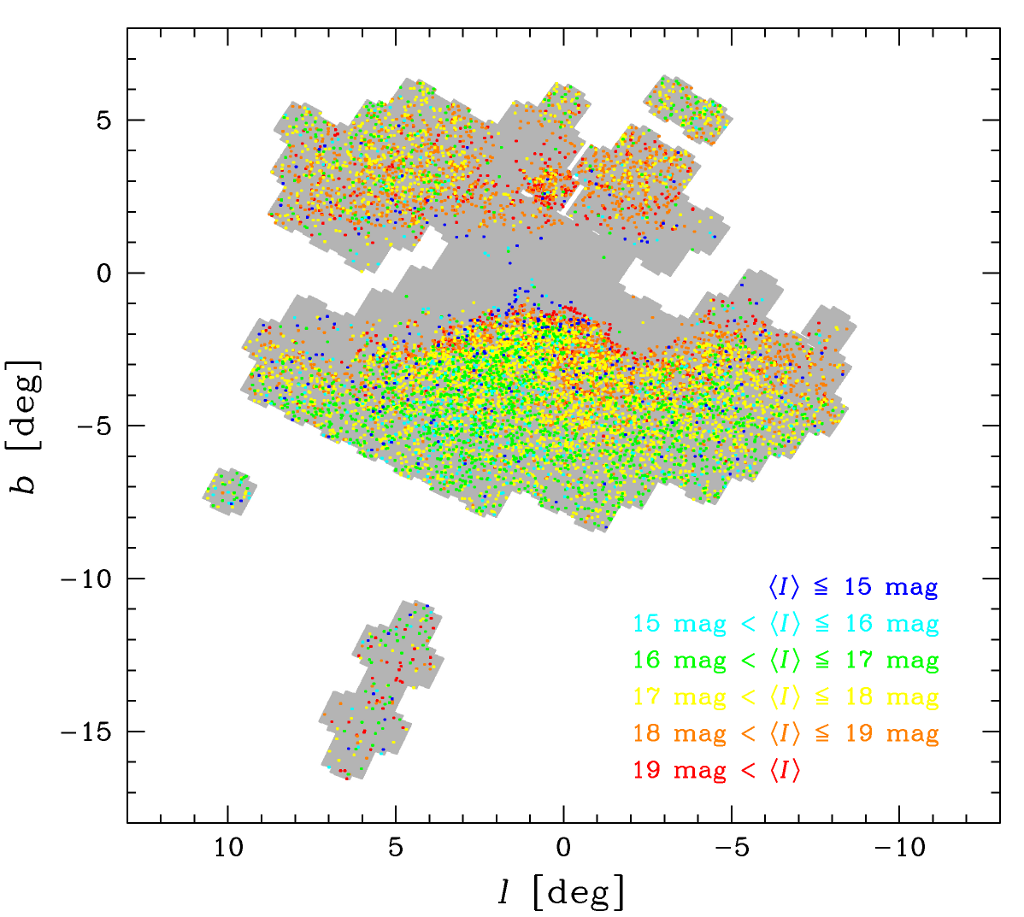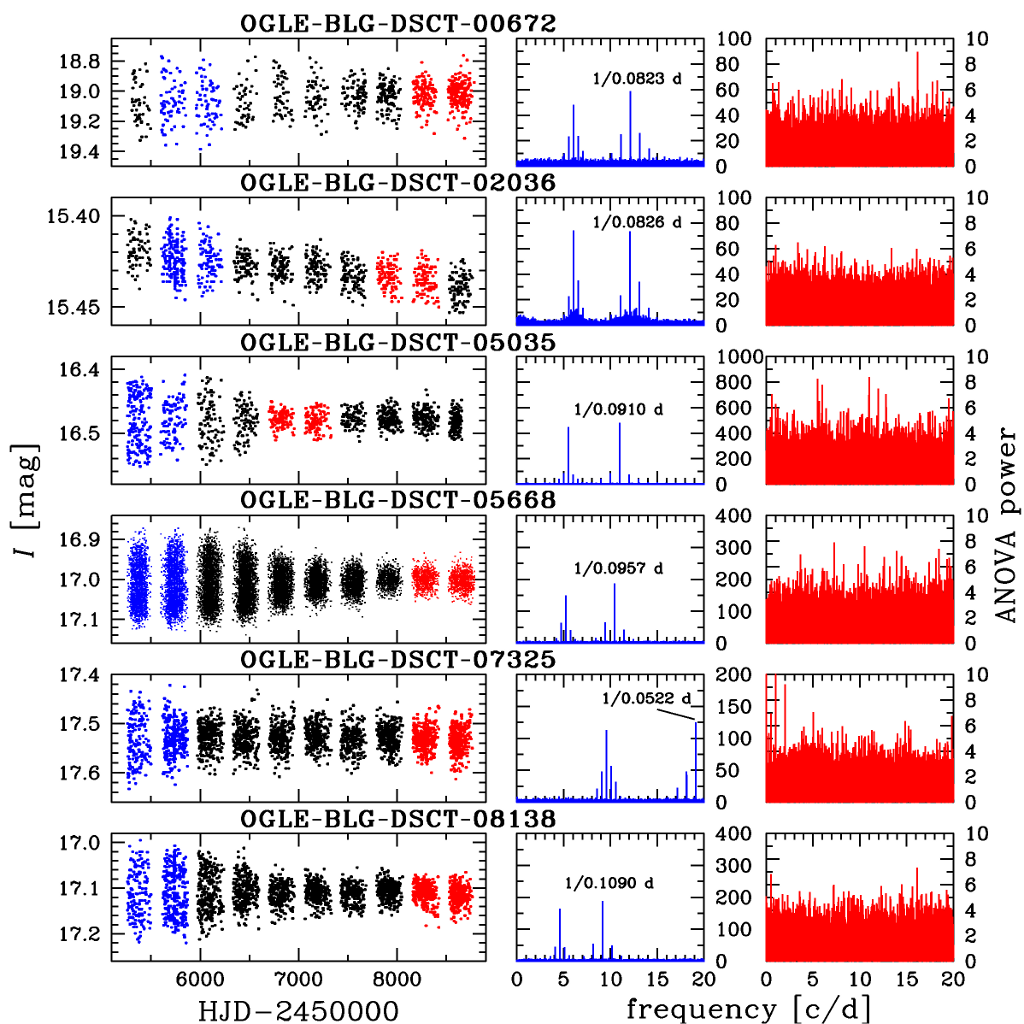 back
OGLE Homepage
back
OGLE Homepage
Pietrukowicz et al., 2020, Acta Astronomica, 70, 241
arXiv:2103.10436,
Over 10 000 δ Scuti Stars toward the Galactic Bulge from OGLE-IV
P. Pietrukowicz, I. Soszyński, H. Netzel, M. Wrona, A. Udalski,
M.K. Szymański, R. Poleski, S. Kozłowski, J. Skowron, K. Ulaczyk,
D.M. Skowron, P. Mróz, K. Rybicki, P. Iwanek and M. Gromadzki
2020, Acta Astronomica, 70, 241
(Received 2020 December 28)
We present a collection of 10 111 genuine δ Sct-type pulsating variable stars
detected in the OGLE-IV Galactic bulge fields. In this sample, 9835 variables are
new discoveries. For most of the stars photometric data cover the whole decade 2010-2019.
We illustrate a huge variety of light curve shapes of δ Sct variables.
Long-term observations have allowed us to spot objects with evident period, amplitude,
and mean brightness variations. Our analysis indicates that about 28% of the stars are
single-mode pulsators. Fourteen δ Sct stars show additional eclipsing or ellipsoidal
binary modulation. We report significant attenuation or even disappearance of the pulsation
signal in six sources. The whole set of variables is a mix of objects representing various
Milky Way's populations, with the majority of stars from the Galactic bulge. There are also
representatives of the Sagittarius Dwarf Spheroidal Galaxy. Some of the newly detected
variables could be SX Phe-type stars residing in globular clusters. The collection,
including full V- and I-band time-series data, is available to the astronomical community
from the OGLE On-line Data Archive.
abstract ?
(Received 2020 Dec 28)
We present a collection of 10 111 genuine delta Sct-type pulsating
variable stars detected in the OGLE-IV Galactic bulge fields (map below).
 (bigger figure)
(bigger figure)
In this sample, 9835 variables are new discoveries. For most of the stars
photometric data cover the whole decade 2010-2019. We illustrate a huge
variety of light curve shapes of delta Sct variables (see examples).
 (bigger figure)
(bigger figure)
Long-term observations have allowed us to spot objects with evident period,
amplitude, and mean brightness variations. Our analysis indicates that about
28% of the stars are single-mode pulsators. Fourteen delta Sct stars show
additional eclipsing or ellipsoidal binary modulation. We report significant
attenuation or even disappearance of the pulsation signal in six sources
(shown below).
 (bigger figure)
(bigger figure)
The whole set of variables is a mix of objects representing various Milky
Way's populations, with the majority of stars from the Galactic bulge.
There are also representatives of the Sagittarius Dwarf Spheroidal Galaxy.
Some of the newly detected variables could be SX Phe-type stars residing in
globular clusters. The collection, including full V- and I-band time-series data,
is available to the astronomical community from the OGLE On-line Data Archive under this link OCVS/BLG/DSCT.
PLEASE cite the following paper when using the data or referring to these OGLE results:
Pietrukowicz et al., 2020, Acta Astronomica, 70, 241
(arXiv:2103.10436).
 back
OGLE Homepage
back
OGLE Homepage